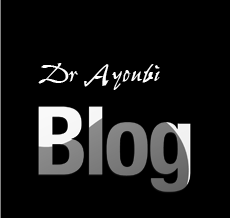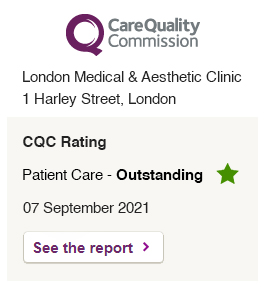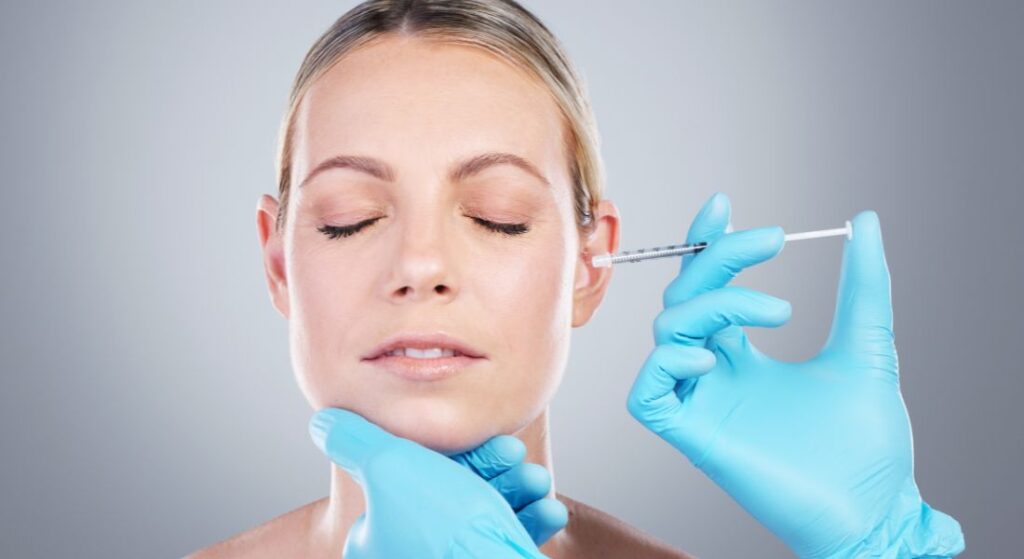
When you invest in an advanced aesthetic treatment like Juläine, it’s only natural to wonder how soon you’ll see results. Unlike fillers or skin boosters that deliver instant volume or hydration, Juläine works on a much deeper, biological level meaning its results develop gradually as your skin regenerates.
If you’ve recently had a session or are considering it, you might be asking, “When will I start to see results?” or “How long does Juläine take to work?”
In this article, I’ll walk you through what to expect at every stage of your Juläine results timeline from the first few days to several months after treatment. You’ll also learn why collagen stimulation takes time, what affects how quickly results appear, and how to maximise your outcome for long-lasting rejuvenation.
Understanding How Juläine Works
To understand the results timeline, you first need to know what Juläine actually does beneath the surface.
Juläine is a biostimulatory collagen treatment that rejuvenates your skin by stimulating fibroblasts the cells responsible for producing collagen and elastin. Instead of filling or plumping the skin like traditional dermal fillers, it triggers your body’s natural healing and regeneration processes.
This approach improves:
– Skin firmness and elasticity
– Hydration and smoothness
– Overall radiance and structure
Because it relies on biological activity rather than mechanical volume, Juläine results unfold gradually typically over several weeks.
Immediate Effects (Days 1–3)
Immediately after your treatment, you’ll notice some visible effects but these are not your true results just yet.
You may experience:
– Mild redness or swelling
– A subtle feeling of fullness in treated areas
– Slight tenderness for 24–48 hours
These effects are short-lived and usually resolve within a couple of days. At this stage, your skin is beginning its internal healing process as the Juläine solution integrates with your tissue.
While you might notice a temporary glow or plumpness right after treatment, this is mostly due to initial hydration and minor inflammation not the final collagen stimulation yet.
Early Phase (Weeks 1–3): Cellular Activation
During the first few weeks, Juläine starts to “wake up” your fibroblasts. These are the cells that produce collagen, elastin, and other structural proteins.
What’s happening beneath the surface:
– The body recognises Juläine’s biocompatible ingredients.
– Fibroblast activity increases.
– Micro-remodelling of skin tissue begins.
You may notice subtle improvements like:
– A fresher skin tone
– Slightly smoother texture
– Better hydration levels
At this stage, results are still mild and progressive. It’s the biological equivalent of planting a seed your skin is preparing for visible transformation.
Mid Phase (Weeks 4–6): Visible Improvement
This is when most patients begin to notice visible changes. As new collagen fibres form and elastin strengthens, the skin gradually becomes firmer, smoother, and more even in tone.
Typical improvements include:
– Reduction in fine lines and early wrinkles
– Improved skin tightness and bounce
– A healthy, natural glow
– More hydrated and supple texture
Friends or family may start to comment that your skin looks “fresher” or “healthier” even if they can’t pinpoint exactly why.
If you’re having a Juläine treatment plan involving multiple sessions, your practitioner may schedule your next session around this time to build on these initial results.
Peak Phase (Weeks 8–12): Full Collagen Remodelling
By around 8 to 12 weeks, the true power of Juläine becomes evident. Collagen production reaches its peak, and the new fibres integrate into the deeper dermal structure.
This stage delivers the most visible transformation:
– Skin feels significantly firmer and tighter.
– Fine lines soften, and deeper wrinkles become less pronounced.
– The complexion looks revitalised and more youthful.
– Hydration and elasticity are noticeably improved.
The best part? These results look entirely natural because they come from your body’s own collagen production rather than synthetic fillers.
Long-Term Phase (Months 3–6 and Beyond): Continued Improvement
Unlike treatments that fade quickly, Juläine’s effects continue to evolve for months after your final session. Collagen synthesis remains active, gradually strengthening the skin’s foundation.
You’ll continue to notice:
– Ongoing improvement in tone and texture
– Better firmness and contour
– A lasting “lifted” effect
– Radiance that doesn’t fade easily
These results typically last up to 18 months, depending on your age, lifestyle, and skincare routine. Maintenance sessions every year help sustain and even enhance the outcome.
Why Juläine Results Take Time
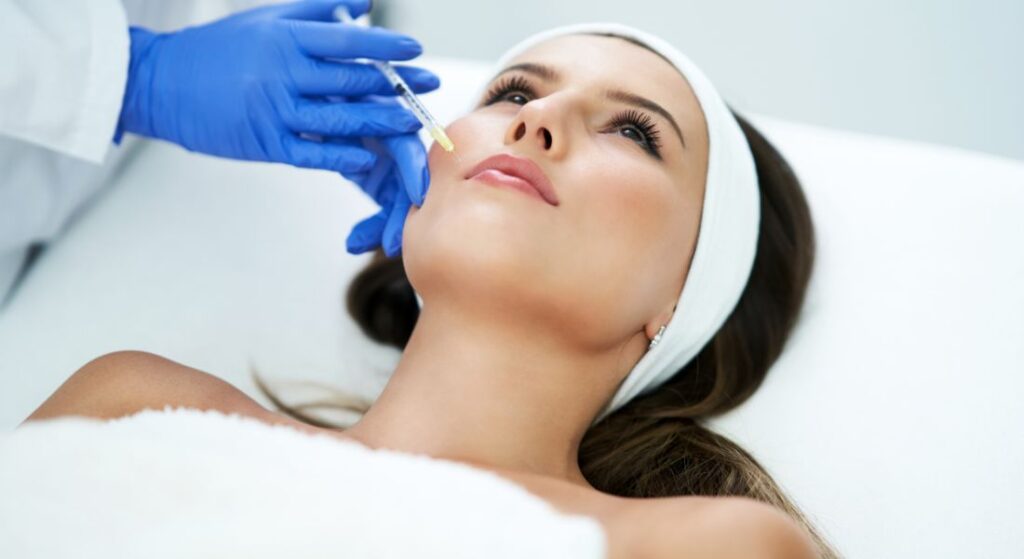
Juläine isn’t a quick fix and that’s precisely what makes it unique.
Most aesthetic treatments work by adding instant volume or tightening the skin temporarily. Juläine, however, addresses the underlying cause of skin ageing the loss of collagen and elastin.
Here’s why it takes time:
– Collagen regeneration is gradual. Your skin needs time to form and organise new fibres.
– Biological remodelling varies by individual. Everyone’s healing and cellular activity differ.
– The process is cumulative. Each session builds upon the previous one for long-lasting effects.
This slow and steady approach ensures that results are not only natural-looking but also structurally beneficial for your skin health.
Factors That Influence How Quickly You’ll See Results
While Juläine follows a general results timeline, several factors can affect how soon and how strong your improvements appear:
1. Age
Younger patients with higher natural collagen levels often see results sooner, while mature skin may take longer to respond.
2. Lifestyle Habits
Smoking, poor diet, and lack of hydration can slow down collagen synthesis. In contrast, a healthy lifestyle with good nutrition and plenty of water supports faster regeneration.
3. Sun Exposure
Excess UV exposure breaks down collagen. Wearing SPF daily after your Juläine treatment helps preserve and maximise your results.
4. Aftercare Compliance
Following your clinician’s aftercare advice such as avoiding excessive heat, sunbeds, or vigorous exercise for 24–48 hours speeds up healing and ensures optimal outcomes.
5. Treatment Consistency
Juläine usually works best with a series of sessions (often 2–3 spaced 4 weeks apart). Sticking to your treatment plan helps your skin maintain consistent collagen activation.
What You Can Expect Month by Month
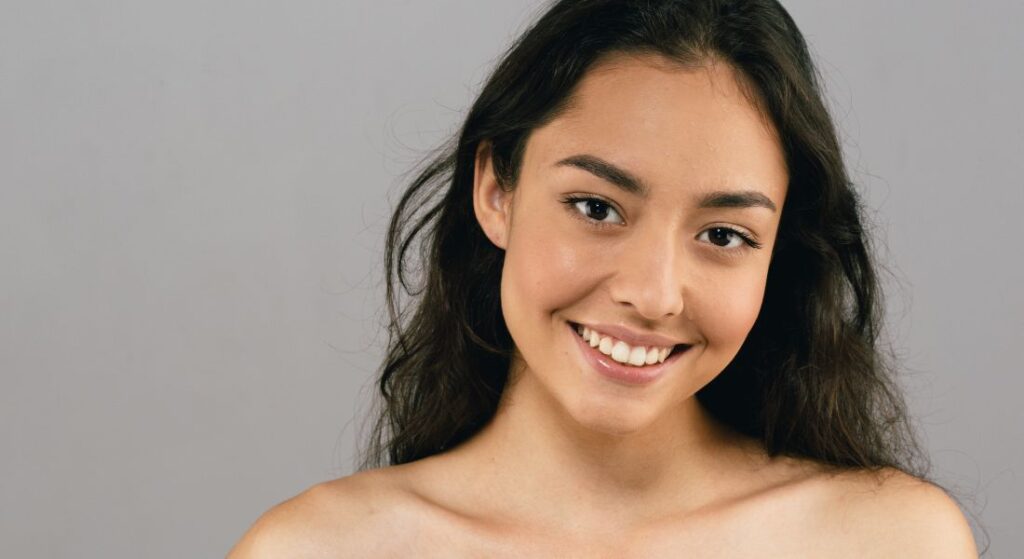
In the first few days after your treatment, you might notice mild redness and some swelling. Your skin will also get an immediate hydration boost, giving you a temporary glow that feels fresh.
During the first few weeks, your skin’s cells start activating, and collagen stimulation begins. You may see subtle improvements in your skin’s texture as it starts working from within. By weeks four to six, your collagen fibres are strengthening and reorganising, so you’ll likely notice your skin feeling firmer and smoother.
Around weeks eight to twelve, collagen production reaches its peak. This is when most people start seeing visible tightening and a more radiant complexion. Beyond three months, the process of collagen renewal continues, helping you enjoy long-lasting, natural rejuvenation.
Your experience might be slightly different, but many people report the most noticeable changes around the two- to three-month mark.
How to Maximise Your Results
If you want your Juläine results to appear sooner and last longer, consider these professional tips:
1. Stay hydrated: Collagen thrives in hydrated tissue. Aim for 2 litres of water per day.
2. Eat a collagen-supportive diet: Include foods rich in vitamin C, zinc, and amino acids (like citrus fruits, nuts, and lean proteins).
3. Avoid smoking and excessive alcohol: Both damage collagen fibres and slow regeneration.
4. Protect your skin from UV: Daily SPF is essential even in winter.
5. Maintain your treatments: Follow the full protocol recommended by your clinician.
6. Use medical-grade skincare: Incorporating products with retinol, peptides, or hyaluronic acid can complement Juläine’s results.
Your practitioner may also recommend combining Juläine with treatments such as microneedling or skin boosters to amplify results further.
Juläine vs Quick-Fix Treatments
You might be wondering why Juläine takes a few weeks to show results when some treatments promise instant effects. Let’s break it down.
With dermal fillers, you’ll see immediate changes because they add synthetic volume to your skin. These results usually last between six and twelve months, giving you a quick boost but not addressing underlying skin health. Skin boosters, on the other hand, work within one to two weeks by hydrating your skin with hyaluronic acid. Their effects last around four to six months and mainly improve moisture and surface texture.
Juläine works differently. You’ll start noticing results gradually around four to six weeks, and the effects can last up to eighteen months. That’s because it stimulates your skin to produce its own collagen, strengthening and rejuvenating it naturally over time.
So, while fillers and boosters offer faster gratification, Juläine focuses on long-term improvement, helping your skin heal and stay resilient rather than just looking temporarily enhanced.
When to Schedule Your Treatments
Timing your Juläine sessions strategically can help you look your best for specific events or milestones.
– For weddings or major events: Start your Juläine journey at least 3–4 months beforehand.
– For general rejuvenation: Plan maintenance treatments once or twice a year.
– For mature skin: Consider a series of sessions 4 weeks apart for optimal collagen activation.
Your clinician will design a tailored plan based on your age, skin condition, and goals.
Combining Juläine with Other Aesthetic Treatments
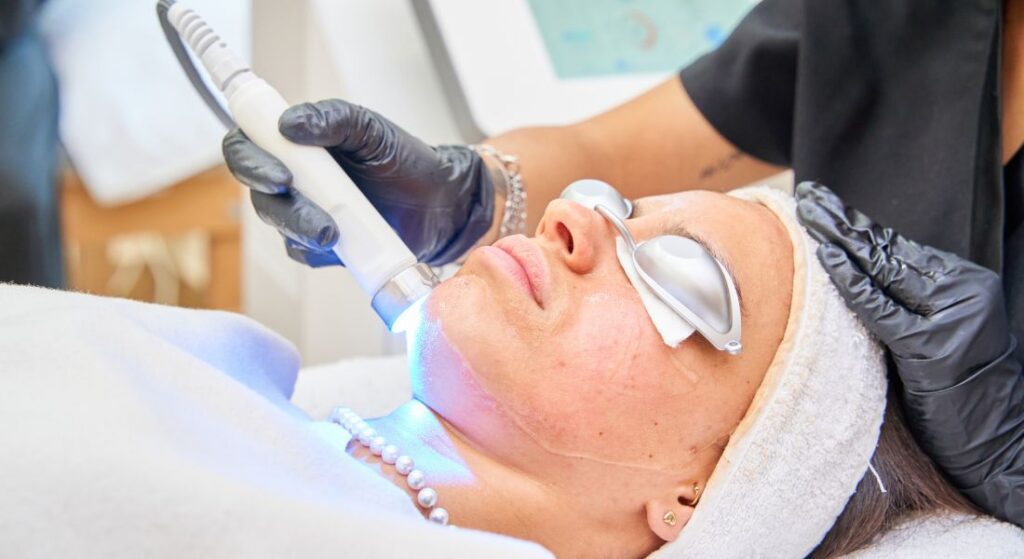
Juläine is compatible with a range of non-surgical procedures, which can enhance your final result.
You can combine it with:
– Microneedling: For texture and acne scars
– Laser skin rejuvenation: For pigmentation and tone
– Profhilo or skin boosters: For deep hydration
– Radiofrequency treatments: For additional skin tightening
These combination approaches create a synergistic effect improving both the surface and structure of your skin.
How Juläine Feels Compared to Other Collagen Stimulators
If you’ve had other collagen stimulators like Sculptra or Ellansé, you might be curious how Juläine compares.
Juläine tends to feel smoother during injection, with less post-treatment tenderness. Recovery is quick, and because it uses a balanced formulation, there’s minimal risk of nodules or unevenness.
Its results are also faster to appear than many traditional collagen stimulators, while maintaining the same longevity and natural finish.
FAQs:
1. How soon will I notice results after Juläine?
You’ll likely start to see subtle improvements around four to six weeks after your treatment. Initially, there may be a temporary glow from hydration, but the real changes appear gradually as your skin produces new collagen and elastin. The visible tightening, smoothing, and enhanced radiance usually become noticeable between eight to twelve weeks, with ongoing improvements for several months after your final session. Everyone’s timeline is a little different, depending on your skin type and lifestyle.
2. How long do Juläine results last?
Juläine’s effects are long-lasting because it stimulates your own collagen production rather than simply adding volume. Many patients enjoy improvements for up to eighteen months, with skin feeling firmer, smoother, and more radiant throughout this time. Of course, maintaining your results depends on factors such as your age, sun protection habits, diet, and adherence to a recommended maintenance schedule.
3. Is Juläine painful?
Most people describe Juläine injections as relatively comfortable, with only mild discomfort during the procedure. Some tenderness, redness, or swelling may occur immediately afterward, but these effects typically resolve within a couple of days. Compared to other collagen stimulators, Juläine tends to feel smoother on injection, and the recovery is generally quick.
4. Can Juläine be combined with other treatments?
Yes, you can combine Juläine with several non-surgical procedures to enhance your results. Microneedling works well for improving skin texture and reducing acne scars, while laser skin rejuvenation can address pigmentation and tone. Pairing Juläine with skin boosters or Profhilo can provide deeper hydration, and radiofrequency treatments may offer additional skin tightening. These combinations allow you to improve both the surface and structure of your skin simultaneously.
5. Are there any side effects?
Side effects are usually mild and temporary. You may notice redness, swelling, or slight tenderness for a day or two after your treatment. Occasionally, small lumps or minor bruising can occur, but these usually resolve quickly. Because Juläine uses biocompatible ingredients and stimulates your own collagen, the risk of significant complications is very low.
6. How many sessions will I need?
The number of sessions depends on your individual goals, age, and skin condition. Many patients start with a series of two to three treatments spaced four weeks apart to achieve optimal collagen stimulation. Your practitioner will tailor the plan to your needs, taking into account how your skin responds to each session.
7. Can I resume normal activities immediately?
Yes, most people can return to their regular routine right after a Juläine treatment. While you should avoid vigorous exercise, excessive heat, or sunbeds for the first 24–48 hours, everyday activities like work, light exercise, and social events are generally fine. Your clinician will provide specific aftercare instructions to ensure the best results.
8. How does Juläine differ from dermal fillers?
Dermal fillers provide instant volume and temporary plumping by adding synthetic material under the skin. Juläine, in contrast, works gradually by stimulating your skin’s natural collagen and elastin production. This means the results appear slowly, feel natural, and help improve the overall health and structure of your skin rather than just offering a quick cosmetic boost.
9. Who is an ideal candidate for Juläine?
Juläine is suitable for most adults looking to improve skin firmness, texture, and overall radiance without invasive surgery. It works especially well for those who want long-term, natural-looking rejuvenation rather than immediate, temporary volume. People with active infections at the treatment site or certain medical conditions should discuss suitability with their clinician before starting treatment.
10. Can lifestyle affect how quickly I see results?
Absolutely. Your body’s ability to produce new collagen can be influenced by factors such as diet, hydration, smoking, alcohol consumption, and sun exposure. Staying well-hydrated, eating nutrient-rich foods, avoiding smoking and excessive alcohol, and protecting your skin from UV damage can all help speed up results and maximise the longevity of your treatment. Following aftercare instructions and maintaining a healthy lifestyle ensures that your skin responds as effectively as possible.
Final Thoughts: Maximising Your Juläine Results
Juläine provides a unique approach to naturally improving your skin’s firmness, elasticity, and hydration, helping you achieve a refreshed, youthful appearance without drastic changes. Many patients notice subtle improvements after a few weeks, with results continuing to develop over several months as your collagen and elastin production increases.
To keep your results long-lasting, it’s important to maintain a consistent skincare routine, stay well-hydrated, protect your skin from the sun with daily SPF, and follow your clinician’s aftercare advice. At the London Medical & Aesthetic Clinic, your practitioner will design a personalised plan for Juläine that suits your skin type, target areas, and aesthetic goals. This plan may also include follow-up treatments or complementary procedures to enhance and prolong your results.
If you’re considering a Juläine treatment, you can contact us at the London Medical & Aesthetic Clinic to discuss your personalised plan and discover how this advanced collagen stimulator can help you achieve natural, long-lasting rejuvenation.
References:
1. Ianhez, M., et al., 2024. ‘Complications of collagen biostimulators in Brazil: Description of products, treatments, and evolution of 55 cases’. Journal of Cosmetic Dermatology, 23(9), pp. 2829–2835. Available at: https://pubmed.ncbi.nlm.nih.gov/38693639/
2. Fisher, S., et al., 2024. ‘The emerging role of biostimulators as an adjunct in facial rejuvenation’. Journal of Plastic, Reconstructive & Aesthetic Surgery, 77(5), pp. 915–922. Available at: https://pubmed.ncbi.nlm.nih.gov/38518624/
3. Kubik, P., 2025. Comparative Analysis of Reconstitution and Solubility Characteristics of PLLA-LASYNPRO™ (Juläine™) Injectable Gel. Journal of Aesthetic Medicine, 12(3), pp. 145–152. Available at: https://pmc.ncbi.nlm.nih.gov/articles/PMC12251569/
4. Ouyang, R. et al. (2025). ‘Advances in Poly-l-lactic Acid Injections for Facial and Body Aesthetic Treatments’. Journal of Aesthetic Medicine, 12(4), pp. 210–218. Available at: https://pmc.ncbi.nlm.nih.gov/articles/PMC12323926/
5. Fisher, S. M. (2024). ‘The Emerging Role of Biostimulators as an Adjunct in Facial Rejuvenation’. Journal of Clinical and Aesthetic Dermatology, 17(4), 24–30. Available at: https://www.sciencedirect.com/science/article/abs/pii/S1748681524001414

